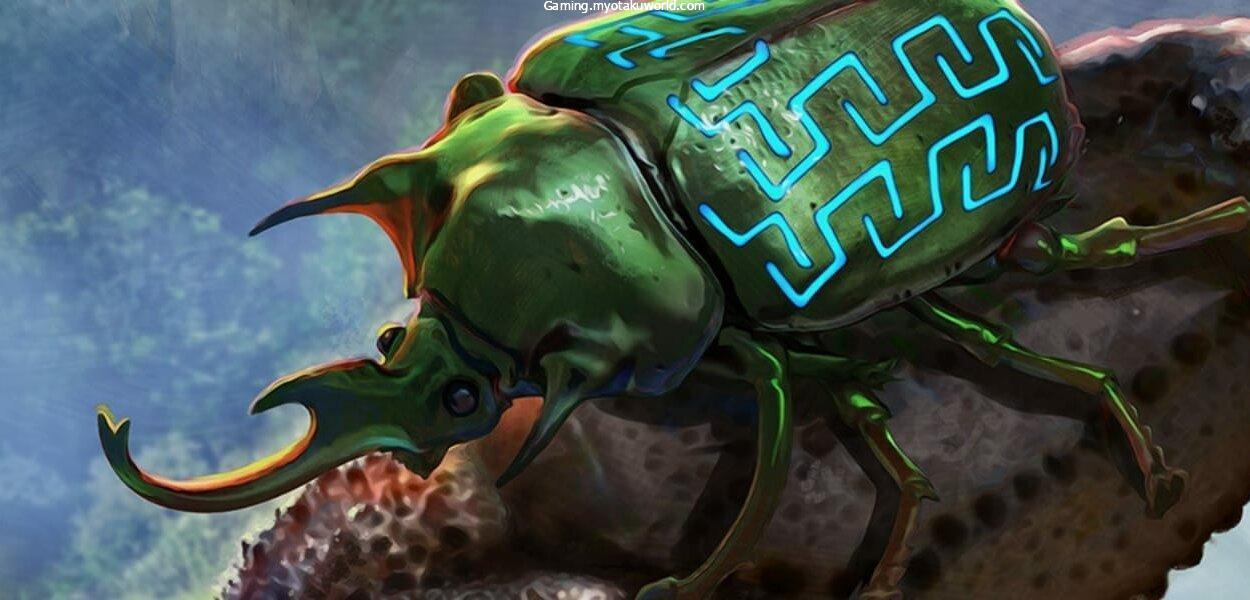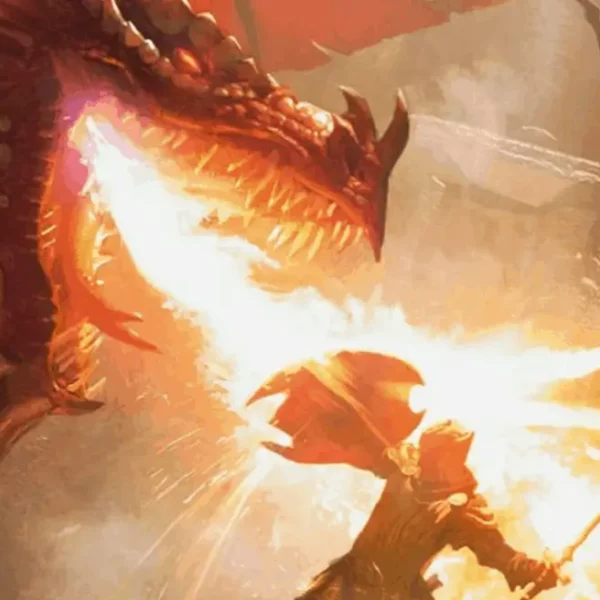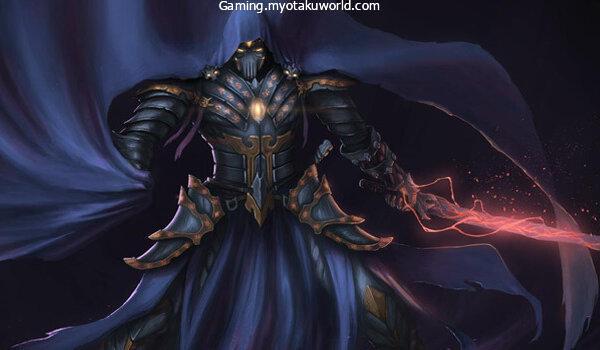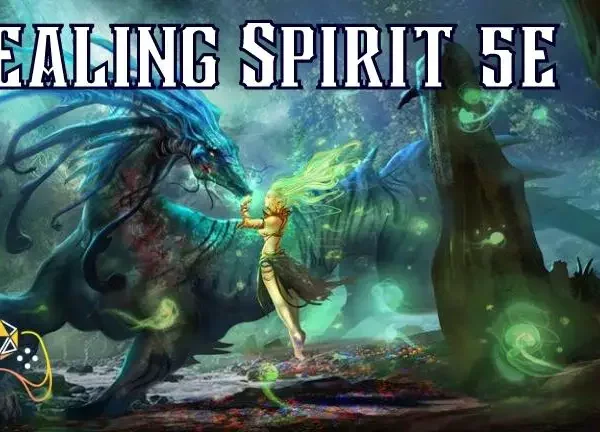You make a cloud of mites, fleas, and other parasites appear briefly on one creature you can see within range.
The target must make a Constitution saving throw or take 1d6 poison damage and move 5 feet in a random direction if it can move and its speed is at least 5 feet.
Roll a d4 to find out which way to go: 1, north, 2, south, 3, east, or 4, west. This move doesn’t make the target vulnerable to attacks of opportunity, and if the rolled direction is blocked, the target doesn’t move.
When you reach 5th level (2d6), 11th level (3d6), and 17th level, the spell’s damage goes up by 1d6 (4d6).
1st level | 5th level | 11th level | 17th level | |
| Damage Dice | 1d6 | 2d6 | 3d6 | 4d6 |
| Minimum Damage | 1 | 2 | 3 | 4 |
| Average Damage | 3.5 | 6.5 | 9.5 | 12.5 |
| Maximum Damage | 6 | 12 | 18 | 24 |
Infestation 5e
Infestation, the bug-themed cantrip from Xanathar’s Guide to Everything, is a powerful RPG tool. Unfortunately, Infestation isn’t very good in battle.
So why do most D&D spellcasters skip this cantrip?
We’ll talk about what’s wrong with the game Infestation and answer some common questions about the rules.
We’ll also talk about how to use the spell “Infestation” well in certain situations and what DMs can do to make it more appealing.
Cantrip Conjuration, Damage, Poison
Level: Druid (1), Sorcerer (1), Warlock (1), Wizard (1), Eldritch Knight (8), Arcane Trickster (8), Bard (10, Magical Secrets)
Materials Required: A live flea
Number of Targets: 1
Die Type: d6
Number of Dice: 1 (increased by 1 at 5th, 11th, and 17th level)
Damage Type: Poison
Save: Constitution
Damage On Successful Save: None
Statuses Inflicted: Target moves in a random direction on a hit
Status Duration: Instantaneous
Affected By Cover: No
Advantage: None
Disadvantage: None
Who Can Cast Infestation?
Infestation is a normal spell for Druids, Sorcerers, Warlocks, and Wizards, and they can start using it as soon as they reach 1st level.
Eldritch Knights and Arcane Tricksters will have to wait until they reach 8th level, which is when they can learn a Conjuration spell.
Bards can learn the spell using their class feature, “Magical Secrets,” which is available to all Bards at level 10.
What Does Infestation Do In 5e?
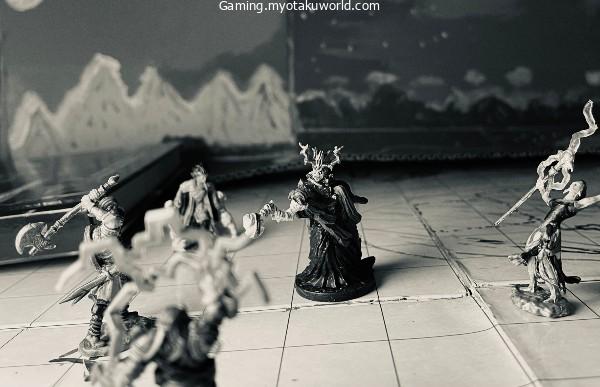
A creature within 30 feet of an infestation must make a Constitution save or take 1d6 (3.5 on average) poison damage and be pushed 5 feet in a random direction. The person who casts the spell rolls a d4 to see which of the four cardinal directions the target moves.
At levels 5, 11, and 17, the damage of Infestation scales like most damaging cantrips.
From a flavor point of view, Infestation makes a bunch of creepy-crawlies appear on the target right away. These bugs probably distract the target and make them run away in any direction they can. These mites, fleas, and other bugs die as soon as they do their job.
What Are The Rules For Infestation In 5e?
The following are the rules for Infestation in D&D 5e:
- Even if a creature is immune to poison damage, it is still forced to move by Infestation. Even if a save fails, spells do their full work, even if they don’t do any damage. Here’s proof from Sage Advice.
- The forced movement of Infestation never gives chance attacks a chance to happen. “Forced movement never causes an opportunity attack unless a creature is forced to move by its own movement, action, or reaction” (PHB 195).
- Since Infestation doesn’t use either of these, and the spell description makes this clear, Infestation’s forced movement doesn’t count as a chance to attack.
- Booming Blade won’t work either, because it needs “the target to move on its own.”
- There is a chance that infestation can break grapple. The rules for moving a grappled condition say that “the condition ends if an effect moves the grappled creature out of reach of the grappler or grappling effect,” such as when a creature is thrown away by the Thunderwave spell. (PHB 290). On Sage Advice, Jeremy Crawford also said the same thing.
- This means that, for Infestation, if the creature you target is grappling someone and you use the forced movement effect to move it out of melee range, the grappled condition ends. If the forced movement lets the creature stay in melee range, the grappled condition is not broken by Infestation’s forced movement.
- “Blocked” means that the creature can’t move at all; it doesn’t mean that moving would hurt it. A creature can’t be in the same space as another creature, an object, a wall, or anything else (PHB 191). If a creature can move into dangerous terrain and is forced to do so by Infestation, it moves into the dangerous terrain and takes its effects.
- A creature can get off its mount if it is infested. “If an effect moves your mount against its will while you’re on it, you must succeed on a DC 10 Dexterity saving throw or fall off the mount and land on your stomach within 5 feet of it” (PHB 198).
- So, an Infestation-targeted mounted creature that fails both its Constitution and Dexterity saves falls off its mount.
- The Poisoned state is not caused by being infested. Poison damage doesn’t always cause the Poisoned condition. One spell that doesn’t do this is Infestation.
How Do I Use Infestation In 5e?
Here are some good ways to use Infestation in your next Dungeons and Dragons game:
- Move targets away from allies or yourself so you can leave the area without being attacked. Forcing an enemy out of melee range gives allies the chance to run away without getting hit by opportunity attacks on the way.
- Even though the random directionality of Infestation means that the target can never be forced in the right direction, it’s not always a bad idea to try.
- Aim for creatures that are close to dangerous terrain. Some examples are traps, cliff edges, and spells like Spike Growth. Remember that Infestation can force the target to move, which could cause them to run into dangerous terrain and take a lot more damage.
- Use Pack Tactics to split up groups of creatures. Pack Tactics is a skill that some creatures have that gives them an advantage if they are close to an ally. Infestation can break up these groups, making it harder for your enemies to attack.
- Get enemies out from where they are hiding. When you use your bug power to get that bad guy out from behind the wall, your ranged allies will thank you because it will be easier for them to snipe him without the bonus AC and Dexterity saving throws that partial cover gives.
- Open the doors. If you just need to get around a creature that’s in your way, Infestation can help. Again, because the spell’s direction is random, you’ll get different results when you use it this way.
- Prevent ranged attack disadvantage. If a ranged ally of yours is next to a bad guy, the bad guy will be less effective with ranged attacks and ranged spell attacks (PHB 195). With a few lucky rolls, Infestation can get rid of this small bother.
- End grapples. Again, Infestation will only end the grapple if the target is forced away from the creature they are grappling. But if you have nothing else, Infestation can get the job done.
- Possible role-playing. Infestation is full of flavor outside of battle. When you make bugs, animals, and parasites appear, it can really freak out a stubborn nobleman or cement your character’s reputation as a sluggish spellcaster with deathly power.
Is Infestation 5e A Good Spell?
No, the spell “Infestation” is not good. Constitution is the ability with the highest average score in the main monster sourcebooks for the game, with an average modifier of +2. Also, poison damage resistance or immunity is the most common one in the game. About a quarter of the creatures in DnD 5e have it.
This means that Infestation is tied for having the fewest chances of being a damaging cantrip in the game (Poison Spray has the same two problems).
Aside from that, Infestation isn’t very useful in any other way. Moving an enemy 5 feet in a random direction can be useful, as I hope the above section shows, but it’s almost never the best thing you could do with your turn.
Infestation 5e Dm Tips
It’s no secret that everyone thinks Infestation is a pretty weak trick. It’s such a popular idea that many people wonder if there’s a problem with tweaking (also called “buffing”) the spell to make it more appealing to players.
Some ideas for Infestation buffs are:
- letting the cast choose which way the movement goes. A solid, no-fuss buff that makes Infestation great for ending grapples, opening doors, and making it more likely that an enemy will be forced into dangerous terrain.
- I think this is the best homebrew change you can make to Infestation. It makes the utility part of the spell much stronger and more reliable.
- Changing the type of damage from poison to fire. A simple fix for the fact that 25% of the monsters in DnD 5e will take no damage or less damage from the Infestation spell. Most people change to necrotic damage, which I think is a good choice.
- Increasing the distance that must be moved. Changing the forced movement to 10 feet could be good, but I don’t think it solves the main problems with Infestation.
- letting the forced movement give attackers a chance to strike. I think this buff is too strong. When there are 1st-level spells like Dissonant Whispers, a cantrip that allows opportunity attacks every round of combat is way too powerful.
Overall, there’s nothing you need to do to change Infestation. When there are 477 spells in a game, some of them are bound to be weaker than others.
Also, some players like to choose spells that aren’t the best if it fits with their character’s story or makes the game harder.
FAQs
Why Should I Take Infestation?
Infestation is… underwhelming. Its mechanics are fun for roleplaying, but the random movement doesn’t make up for its low damage since it doesn’t trigger things like Booming Blade.
Is Infestation an Area of Effect?
No. Infestation doesn’t affect a large area; it only affects one person.
Does Infestation inflict a poison status?
No, infestation does not give you a poison status that lasts.
Is Infestation a Concentration spell?
No, an infestation happens right away.
Does Infestation trigger Booming Blade?
No, Infestation does not cause the extra damage from Booming Blade because the target is not moving on its own.
